Today we present facts about Belgium! Belgium is a flat country (the highest peak is 694 metres above sea level) called Botrange signal) that not everyone knows much about. Belgium has perhaps the most castles in the world per square kilometre and many cities feel like medieval worlds with spires and towers. Both the EU and NATO are located in Brussels, Belgians love waffles and chocolate, and the beer is bad... Here we go!
Table of contents
Facts about Belgium
Here are lots of facts about Belgium! The small European country has 11 million inhabitants, beautiful historic cities, 13 Unesco World Heritage Sites and lots of good food. Belgians themselves love cookery books and eating out, and there are over 800 Michelin-starred restaurants, many of which have stars.
Belgians love beautiful 'flower carpets' (large colourful flower beds that look like carpets) and are of course responsible for the Brussels sprouts, which have probably been grown here for hundreds of years. Want to start a conversation with a Belgian? Talk about the weather and you have a new friend, but avoid talking about money.
1. Belgium's three languages
The northernmost part is Flanders where Dutch is spoken. The southernmost part is Wallonia with the French language, and in the south-east there is a small group of German-speaking Belgians. There is no "Belgian language" and therefore all rules, laws and regulations must be made in three languages. This creates confusion and many governmental conflicts.

2. Tintin is from Belgium
The good guys Asterix and Obelix come from here. You will also find Tintin, the Smurfs, Gaston, Lucky Luke and many more. Belgians love their comics and there are over 800 of them registered. Most have several hundred comic books or magazines of their favourites, and these are the children's bedtime stories. Head to the Moof Museum in the centre of Brussels to discover more!

3. Delirium Café holds a world record in beer varieties
In the old town of Brussels is the bar that holds the world record for beer varieties and is the pride of Belgium. According to the Guinness Book of Records, there are more than 3000 types of beer at the Delirium café. We got to see this because we hired a city guide. Read our tips on bars in Brussels!

4. BMI was invented in Belgium
BMI: The Body Mass Index was invented by the scientist Adolphe Quetelet between 1830 and 1850. It is how to measure body mass.
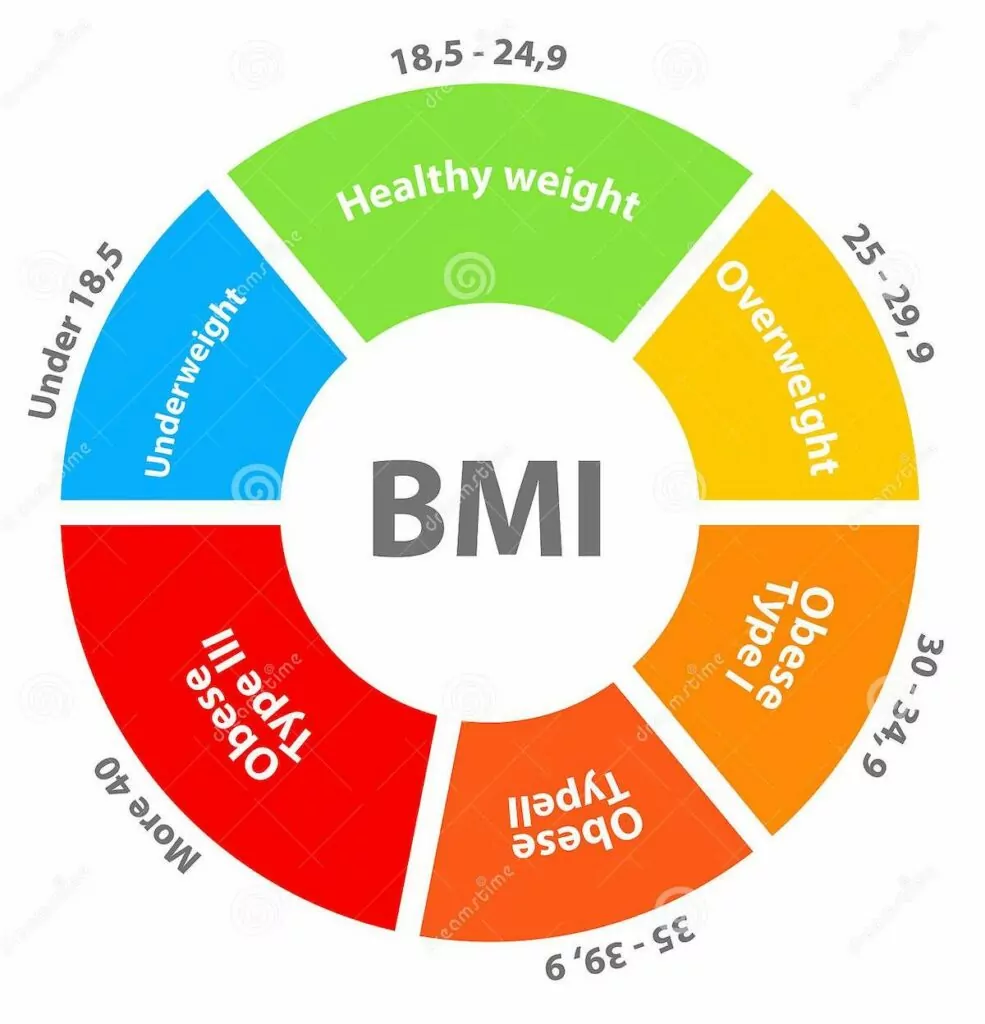
5 Adolphe Sax
As early as 1840 music producer Adolphe, from the town of Dinant, wanted a cool new instrument. He tinkered and tinkered and eventually a new sound came out of a bent clarinet type? He got it right and named the instrument the saxophone.

6. Football in Belgium
Eden Hazard and Romelu Lukaku are famous footballers. Belgium won Olympic gold in 1920, European silver in 1980, 4th in the 1986 World Cup and 3rd in the 2018 World Cup. Belgium's football team is called "Red Devil" and Belgians are crazy about football.
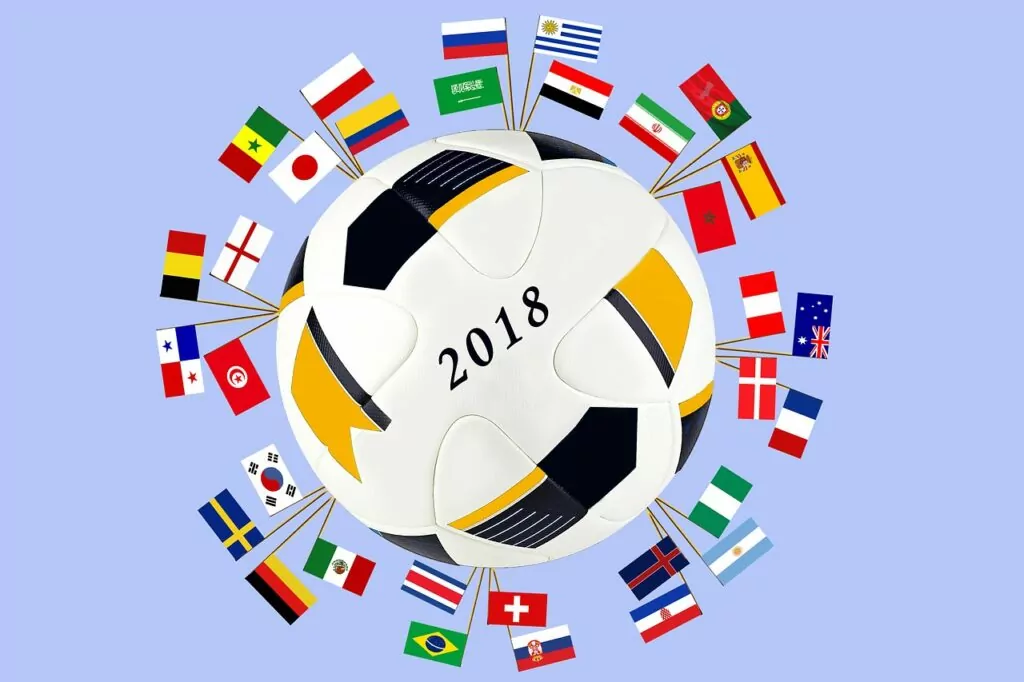
7. Plantin-Moretus Museum
Plantin-Moretus Museum (UNESCO World Heritage Site) tells of the bookbinder Christophe Plantin who published his first book in 1555. The printing press was the centre of printed books in the 16th century and is located in the Antwerp. The successful bookbinding company Officina Plantiniana was created here and just about everything in the bindery has been left for posterity to see. Impressive!

8. The world's longest tram line
The world's longest tramway line connects all the cities along the coast of Belgium with De Kusttram. It runs between Knokke-Heist on the French border, to De Panne on the Dutch border with 69 stops. Enjoy the sea and ride along 68 kilometres. Don't forget to do some luxury shopping in Knokke on the North Coast!

9. St Hubert Gallery is the oldest in Europe
The St Hubert shopping centre in Brussels is the first to be built in Europe, back in 1846. This is not to be missed when visiting Brussels! Discover chocolate shops, fashion, cafés and patisseries in a delightful atmosphere.

10. The world's largest court building in Belgium
Belgium can boast of the imposing Justice building in Brussels. It was built in 1866-1883 and is 26,0000 square metres. We tried to take a picture of the whole mighty building but it was impossible, but we went inside and met judges in white cravats and black clothes. Just like in film... Really worth seeing!

11. Victor Horta and Josef Hoffman
Behind some UNESCO World Heritage Sites Brussels is home to two famous architects: Victor Horta and Josef Hoffman. Victor Horta has his works protected in Brussels on the UNESCO World Heritage List. You can find them at Hotel Tassel, Hotel Solvay, Hotel van Eetveld and Maison & Atleter Horta (Horta Museum).
Josef Hoffman is behind the most elaborate and luxurious private residence. Stoclet Palace in Brysse (built 1905-1911) which is also a UNESCO World Heritage Site.

12. Gay marriage is ok in Belgium
Liberal Belgium was the first to legalise gay marriage in Europe, doing so in 2003. Belgium was way ahead of many other countries. Well done Belgium!

13. Belgium's Peter Paul Rubens
The painter Rubens comes from Belgium and made the world more beautiful between 1577 and 1640. Considered the best northern European Baroque painter, he was most active in Antwerp, where he died in 1640.

14. World record for longest time without government
How do you get free beer and chips for a whole day in Belgium? Yes, when there is something to celebrate. After a difficult time getting along, but finally after 541 days, Belgium got a new government. This is a world record in modern times without an official government. This must be celebrated with free beer and chips for everyone!

15. City of Spa
In the Walloon region of Belgium, the town of Spa is located he first spa and Europe's first casino, la Redoute, opened in 1763. Is this where it all started with spas or did it start even earlier with our ancestors?
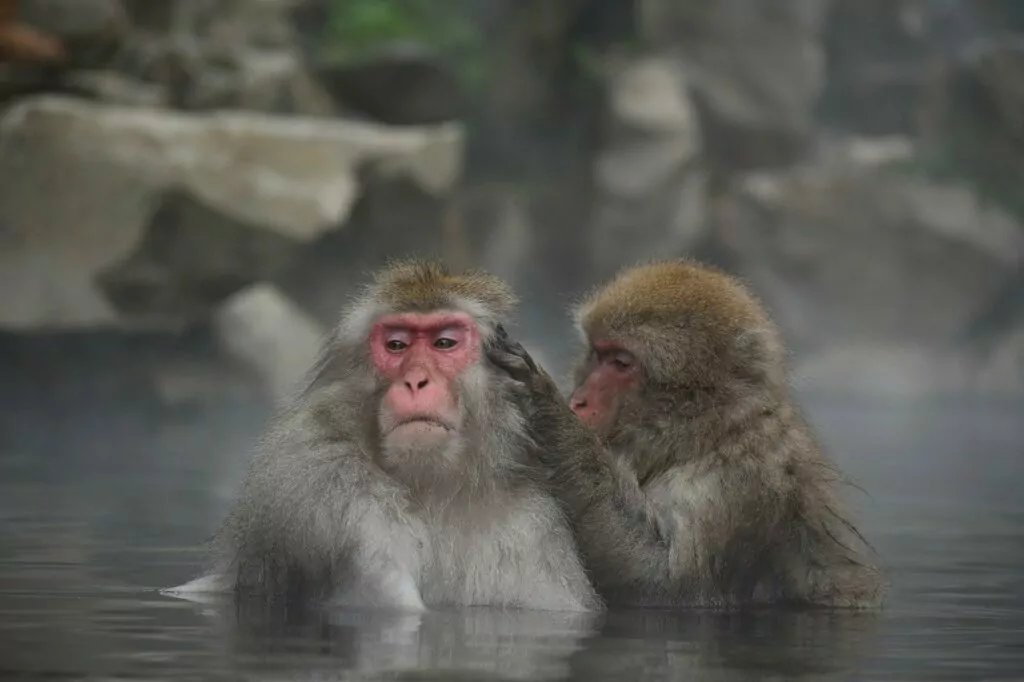
16. the caves of Remouchamp
The Rubicon River is the longest underwater river in the world. 8000 years ago there were people in these caves, and It is also home to a transparent shrimp (niphargus) that is blind. A guided tour includes a walk and boat ride.

17. Manneken Pis and Jeannike and Zinneke Pis.
Manneken Pis is a landmark and if you want more of the Pis family, there is the Garderobe Manneken Pis Museum in Brussels. Costumes are changed several times a week at Manneken Pis so that everyone has something new to look at.
- The Manneken Pis landmark in Belgium. The bronze statue of a little boy urinating, the first one dating from 1619, can be seen at the junction of Rue de l'Étuve and Rue du Chê in Brussels.
- Jeanneke Pis is the sister to the Manneken Pis which was unveiled in 1985. You can find her at 10 impasse de la Fidélité in the Old Town of Brussels.
- Zinneke Pis is their dog which was first shown in 1998. You can find it at the junction of Rue des Chartreux and Rue du Vieux-aux-Grains in Brussels.

18. Belgium's Jean-Claude van Damme
The action actor Jean-Claude van Damme, who was born on 18 October 1960 and spent 20 years in the cinema, is from Belgium. He took up karate at the age of 11 and went straight to the cinema. In total, he made 52 films over the years. He also did the splits in the famous Volvo lorry advert.

19. Beer school in Belgium
The world's first beer school was opened in 1999 in Herk-de-Stad, Belgium. No wonder they have and can develop beer at a very high level. Each beer has its own glass so that you get 100% of the flavour. Keep in mind that Belgium has over 800 different beers!
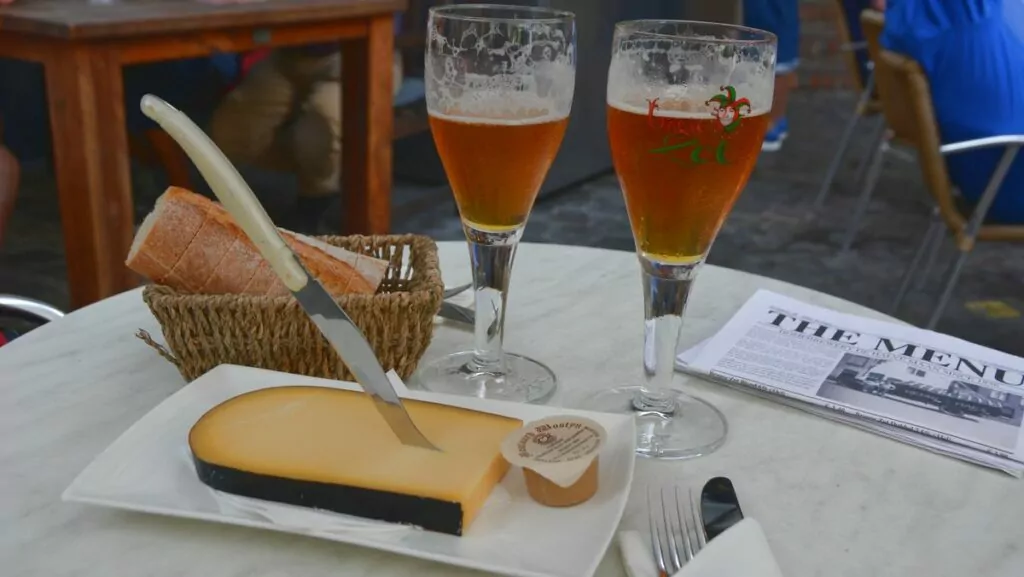
20. Flemish Beginner's Farms
UNESCO World Heritage Site with 13 Beginner's Farms in Belgium. They are located in Hoogsraten, Lier, Mechelen, Turnhout, Sint-Truiden, Tongeren, Dendermonde, Ghent, Sint-Amandsberg, Diest, Leuven, pier This created women as a kind of enclosed townhouse area when the man was brutal or went off to war, and then all the women could help each other in the Middle Ages.

21. Belgium's Beffroirer
There are plenty of UNESCO World Heritage Sites in little Belgium, and these towers or bell towers would warn the population of danger. There are 32 Beffroirs in Belgium and they stand up and look like some sci-fi film.

22. The divine waffles of Belgium
We have two different kinds of waffles ... We start with the Belgian waffles that they like. Brussels waffle with sugar, which is square with only icing sugar, and Gaufre de Liege, which is oval without sugar.
The other is the "tourist waffle" where you can choose one or more toppings, such as cream, ice cream in different flavours, different fruits, chocolate sauce, caramel sauce or maybe nutella which is three times more expensive but much tastier in my opinion (Peter). If you come to Brussels, look for "waffle trucks" in white and orange.

23rd Moules Frites Museum
You know that it was in Belgium that Moules frites started. once upon a time. Of course, there is a museum located in Bruges. Would you eat French fries with ketchup here? Not! Here you eat them with mayonnaise Ooh, soooo good! French fries come from Belgium and you can find them in any village centre and here they are called "Baraques à frites".

24. The world's largest beer producer in Belgium
The company Anheuser-Busch Inbev has a whopping 206,000 employees, which is insane! They control 14 per cent of the global beer market, and are based in Leuven, which also has the world's longest bar counter at Café Allée in the old Ode Markt square. It's also home to Belgium's oldest and largest university.

25. Audrey Hepburn
The hugely famous star actor Audrey Hepburn has received many awards: Emmy, Oscar, Tony and Grammy awards. Audrey 1929-1993 was a megastar! She was a model, film star and dancer. She appeared in 32 films and played against the biggest film stars of the time, and of course has a star on the Hollywood Walk of Fame.
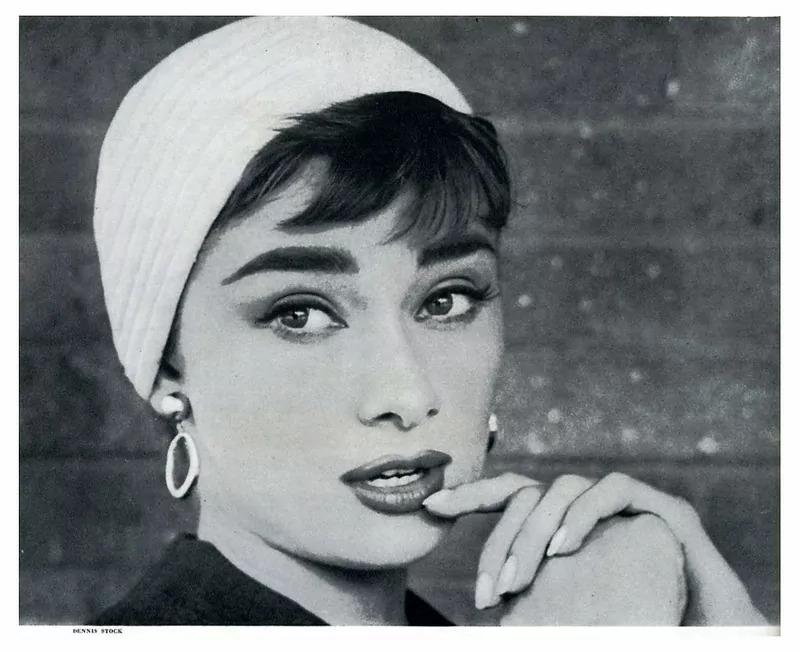
26. Belgian Trappist beer
Trappist beer is currently only produced by 6 Trappist monasteries in Belgium.There are only 12 in the world that are authorised to produce Trappist beer. The others are in the Netherlands, Italy, Austria, England and the United States. If the Pope has approved the monastery and the three requirements, they can produce the beer. The authorisation includes an ITA logo on the bottle - Authentic Trappist Product.
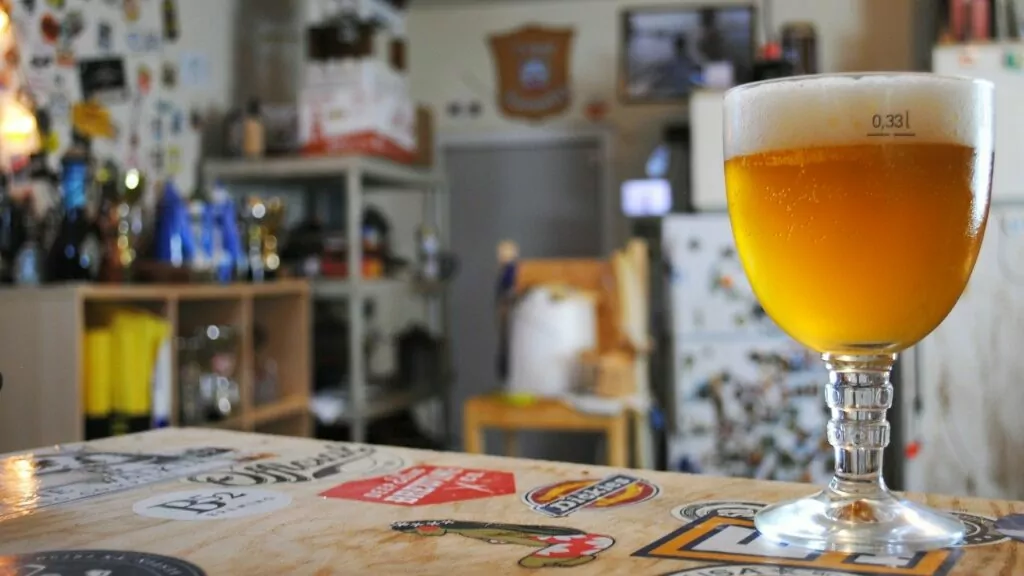
27. Waterloo is located in Belgium
You know that Waterloo, which ABBA sang about, is located in Belgium. It was here, on what has been called the battlefield of Europe, that Napoleon lost in 1815 with his 200 000-strong army.

28) Parc du Cinquantenaire
Belgium's own triumphal arch can be found in the Parc du Cinquantenaire in Brussels. The Cinquantenaire is a 37-hectare park in the centre of Brussels that was built by Leopold II of Belgium to celebrate the 50th anniversary of Belgium's independence in 1880. Very impressive!

29. Belgium's Jean Neuhaus and the airport
1502 Chocolate came to Europe but it wasn't until 1857 that the first chocolate shop was opened in Belgium by Jean Neauhaus, best known for his 1912 pralines. Today, more than 1500 shops worldwide sell his chocolates.
Brussels Airport (Zaventem) is the biggest seller of chocolate in the world (800 tonnes per year), even though Belgium is the same size as Småland.

30. Belgium's diamonds
The diamond capital of the world is called Antwerp is Belgium's second largest city and home to Europe's second largest harbour. More than half of the diamonds sold around the world pass through this sparkling city. We can recommend the DIVA museum which is absolutely awesome and you can learn more about diamonds.
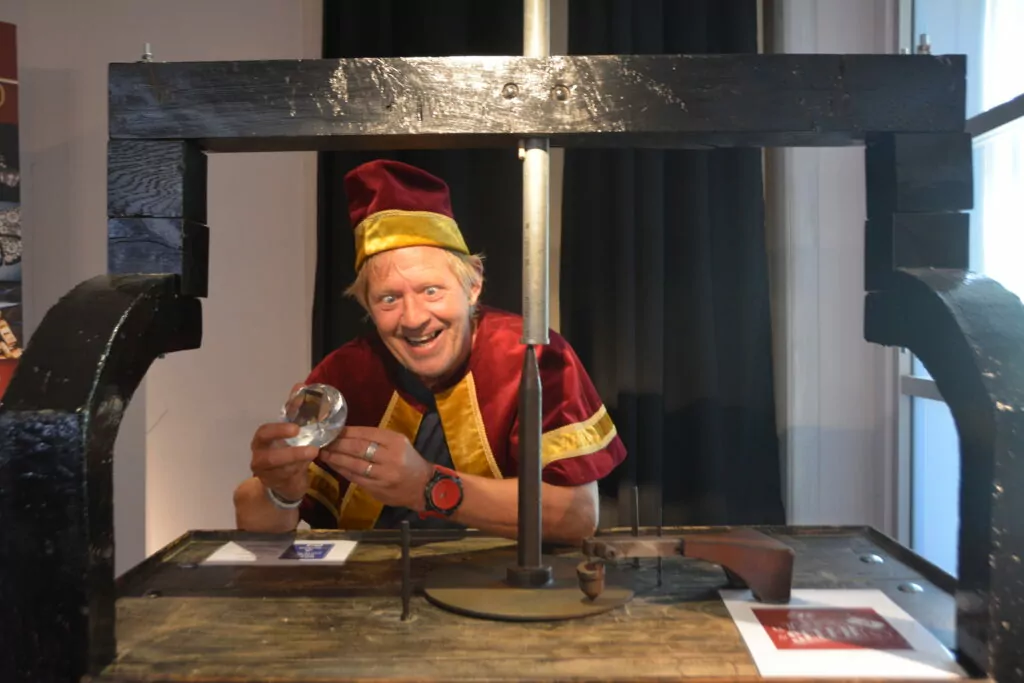

More interesting facts about Belgium
- The Scheldt is the largest river
- The largest city after the capital is Antwerp
- Highest building in Belgium. The South Tower in Brussels is 486 metres high with 38 floors. It was built in 1967.
- 4 Nobel Prize winners come from Belgium
- Football is really big
- Education is compulsory until the age of 18.
- Belgium has legalised euthanasia
- Belgium is bordered by The Netherlands in the north, Germany in the east, Luxembourg in the south-east and France in the south.
- It is a lowland with a coastline facing the North Sea and the English Channel to the west. The country is slightly rainy with mild winters.
Belgium's 15 UNESCO World Heritage Sites
- Flemish early monasteries
- Grand Place in Brussels
- The four locks of the Canal du Centre and its surroundings, La Louvière and Le Roeulx (Hainault)
- Beffroier in Belgium and France (extended in 2005)
- The old town centre of Bruges
- Significant works by architect Victor Horta in Brussels
- Neolithic flint mines in Spiennes (Mons)
- Notre-Dame Cathedral in Tournai
- Plantin-Moretus Museum
- Stoclet's palace
- The architectural works of Le Corbusier
- The Blegny coal mines in Wallonia
- Chapelle notre-Dame du Haut in Ronchamp
- The place "Spa" in Belgium
- The charity colonies in Belgium
Surprising facts about Belgium?
Were these perhaps some surprising facts about Belgium, or did you already know everything? Do you have any more exciting facts about Belgium to share?
Belgium FACTS

- What country? Belgium (Kingdom of Belgium), King Philippe
- Capital city? Brussels
- Time difference? None
- Residents? 11.35 million (2017)
- Country code 32
- National Day 21 July
- National bird? Kestrel
- Residents? 11.46 million (2019)
- Currency? Euro
- Members of the EU? 1 January 1958, Member of the Schengen area since 26 March 1995.
- Religion? Christianity (mostly Catholicism)
- Language? Dutch (Flemish), French (mostly in Brussels and southern Belgium, Wallonia) and German (eastern Wallonia). In addition, many are good at English.
- National anthem? La Brabançonne which is available in three official languages: French, German and Dutch.
- Flag? The flag of Belgium is from the left and vertically black, yellow and red. Also available with a coat of arms (Brabants) with black background/yellow, with a lion in gold/black with red tongue if you visit Belgium from 1931.


HISTORICAL facts about Belgium
History of Belgium begins around 8000 years ago BC, when remains were found in the caves of Remouchamps.
The flint mines of Spiennes 4200-2500 BC, shows that Flinta was excavated for the manufacture of tools and bartering.
In 50 BC the province of Gallia Belgica became part of the Roman Empire, and the people were called Belgians after a Celtic race. The Romans were mainly in Gaul, which was then in modern-day Wallonia.
AFTER CHRIST
By 400 AD the Franks from the north drove the Romans to the south. For several hundred years, new French kings sought to rule the country.
Around 700, seafarers began and traders established new contacts with the Mediterranean regions. From the year 1000, the weaving industry developed and Flanders grew.
At the beginning of the 15th century Flanders, with Bruges, Ghent and Antwerp, was the most important point in Europe, and they were enormously rich trading centres.
Textiles, cocoa and diamonds were some of the most important trade goods. At this time, many Walloons moved to Flanders for work.
In the latter part of the 15th century Belgium became part of Habsburg rule. They saw their chance and taxed the rich from Flanders which was not very popular, but it was better than what was to come.
WORSE TIMES
Middle of the 16th century Habsburg rule was split and Belgium came under Spanish-Dutch rule. This was not appreciated and Flanders with Germany took care of Flanders, but the Spanish made all of Wallonia Catholic.
This meant internal war and that is never good for trade, and at the same time the French wanted to drive them all out and made many attempts to take power.
In the first part of the 17th century many Walloons emigrated to Sweden and Finspång (Norrköping), because they knew about iron.
It continued for many years where Sweden needed skilled labour. The Spanish King Philip IV forbade this in 1624 but failed to stop the emigration.
1713 after the War of the Spanish Succession Belgium came under Austro-Dutch rule, which was not popular in France.
For several years, France gathered and in 1795 they went in with their forces under the leadership of Napoleon Bonaparte. They wanted everyone to think French and speak French as in Wallonia.
The Flemish were very angry and in 1798 there was a Flemish peasant uprising that united the nation. It went so far that it ended in a major war at Waterloo, which Napoleon Bonaparte lost in 1815.
This in turn meant a separate government called the Kingdom of the Netherlands, including Belgium and Luxembourg.
The Belgians were not so happy and 15 years later in August 1830, the Belgians rebelled against the King of the Netherlands and on 10 November 1830 Belgium's independence was declared.
21 July 1831 Prince Leopold was elected King of Belgium as Leopold I, which also became Belgium's national day. In 1839, the current border between the Netherlands and Belgium was established.
BETTER TIMES
Rich Flanders had lost a lot from all the wars and conflicts, and the boom came to the formerly poor Wallonia (southern Belgium).
In the middle of the 19th century an economic boom began. With the help of British engineers, Belgium became the first country on the European continent to industrialise.
The country's economic centre of gravity came to be located in the coal district of Wallonia, where the iron industry was relocated. Now the Flemish people moved to richer Wallonia instead of working.
1900S
First World War took place and Germany occupied the whole of Belgium. The unpleasant trench warfare was fought in Flanders, and the war was followed by economic difficulties. The depression of the 1930s affected the whole of Europe.
Second World War started and now Belgium was occupied by the Germans again between 1940 and 1944. King Leopold III chose to stay in the country and was held prisoner by the Germans. The rest of the government went into exile in London.
After the war the order has been reversed again. Flanders is the richer part of Belgium and the Walloons have lost what they once had.
There is also a language barrier that disrupt the internal arrangements in the country of Belgium still today in 2019. Belgium is a federal state and with the three different regions, this means that all laws have to be made in multiple languages.
Belgium is a constitutional monarchy where a king or reigning queen is the country's head of state.














BP says:
There was surprisingly much in your interesting and packed post that I didn't know. So thank you for that tour of Belgium and all the nice pictures.
It's funny that you mentioned Romelu Lukaku today. Because he clashed with Zlatan in the Inter Milan - AC Milan cup match. And Zlatan was sent off. A funny coincidence, because Lukaku is not often mentioned outside Belgium even though he has played in many European clubs.
Even in Holland and some parts of Germany, people eat chips with mayonnaise. Better than with ketchup. Agreed.
27 January 2021 - 19:33